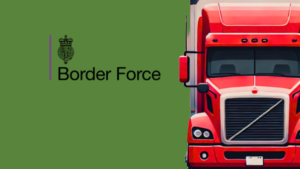
Creating new, more efficient operations for a central government organisation
Working with staff across the UK to design, build and sustain services that drive operational efficiency and improve the way that data is captured.
The client
Due to the sensitive nature of this project, we have anonymised the client in this case study.
Zaizi’s role
- Strategy
- Agile
- Product management
- Service design
- User research
- UX & content design
- Engineering
- Architecture
- Process Automation
- Devsecops
- Cloud services
- Support
The brief
This major central government has a number of processes that run on paper or old and sometimes outdated IT systems
It had a vision to introduce a platform that allowed all its operational staff to use devices and capture data at source and on the move, which would then be stored centrally and be accessible to management.
We helped support the design, build and implementation of this system. The aim was to create a more efficient, cost-effective service by simplifying existing processes and improving data management and reporting.
We were also asked to support the team with its product strategy. This included communications support to help explain the vision and mission of the project to various stakeholders across the business.

The delivery
The service allows data capture via mobile devices. It replaces paper processing and stops staff having to input information several times and on multiple systems.
We have worked with this central government client for over three years, supporting the internal team across multiple streams of work.
In this period we have:
- created a living roadmap that helped the team plan, identify and prioritise work and align it with wider organisational objectives
- introduced consistent design schemes to reduce useability issues and training requirements
- researched and designed an app to log information
- contributed to new products including mobile fingerprinting and passive authentication
- conducted workshops with senior stakeholders and frontline staff, creating a space for meaningful discussions and building consensus
- provided communications and marketing support, including guidance, video content and a product page following GDS guidelines to raise awareness of the service
- provided specialist skills around business process management (BPM) and data architecture
- developed a new cloud storage platform integrating Amazon Web Services and Azure, making data more convenient to access and more secure
- helped to align the platform with a broader GOV.UK framework
The outcome
Stakeholders told us the many ways the service has benefitted the organisation.
- More efficient working practices have led to tangible cost savings.
- Strategy and marketing support helped with stakeholder buy-in, allowing the team to secure more funding and expand its work within the organisation
- Frontline users say that it helps them to do their work better.
- Easy-to-read guidance helps reduce support tickets and errors.
Products we contributed to made substantial time savings, estimated at around 60%-78%.
Challenges
Bringing staff on the journey
Some processes were still completed on paper, and some long-standing frontline staff were doubtful that new digital processes would help them.
We worked in partnership with the frontline staff, using prototypes to help them visualise processes and co-create solutions. We took a user centred design approach, getting users involved in the development of the application through user testing, feedback and regular iteration. This helped us get a full understanding of the processes and helped us gain the trust of the staff, helping us build things that really worked for them.
Following GOV.UK styling, we also created a product page with a guidance section to help frontline staff gain confidence in the new product. It was developed in an agile way by a cross-functional design team to a tight one month deadline. The product page featured guides, case studies, infographics and videos and was tested with all stakeholders, including frontline staff, back office and management.
Open source to prevent vendor lock in
The current GDS service standard states that new services should be built with open source tools, where possible. We used our experience in open source design to deliver on this requirement, working with recognised open-source tools and coding languages, with the source code held in Gitlab.
Working open source brings a number of benefits, including:
- resilience – this is commonly used technology that is widely recognised and easy to support
- long-term flexibility – the client has more ownership of systems and processes, if they want to change or amend things later
- potential for collaboration – it’s easy to create tools that effectively integrate and interact, enabling co-creation of services with business SMEs
Meeting high security standards
This central government client requires us to work in a high security environment and access to sensitive information.
All our staff on the project have the required level of security clearance. Working in a high security environment can also mean adapting to new ways of working. On this project, we used the client’s equipment, and approved digital tools to ensure that we stored data in a safe and secure manner.
From the research
“Working on the frontline is a very high pressure environment – a new process musn’t slow us down”
Frontline officer
Please note – our research sessions are held in confidence, so the quotes below are not direct quotes; instead they are representative of our research findings and reflect sentiments commonly expressed by the users we interviewed.
How we put our learnings into practice
Squaring the needs of frontline staff and senior management
Frontline staff work across different parts of the country. They have a huge variety of tasks that they may be called upon to do in a typical working day, and often work in extremely pressurised situations. One of the key objectives for new services was to improve the collection of data and intelligence gathering. It was important to balance these needs with the needs of the frontline staff who need to collect this information quickly.
To minimise the tools frontline officers needed to use, we created a user interface that could smoothly and intelligently guide staff through their daily activities.
One data input serves many needs
A key learning was that by improving the management of data, we could decrease the workload at the frontline. Once, staff might have had to input a single piece of data into multiple systems. By taking an API-led approach, a single data input can be passed and segmented around multiple systems, reducing the need for multiple inputs and driving efficiency at the frontline.
Additionally we worked to provide frontline officers with pre-filled data where possible, reducing the amount of typing that they needed to do.
Improved categories for data capture
One problem we identified was a lack of clear categorisation when staff were collecting data. Without a standardised system, different departments within the organisation would often categorise things in different ways. This led to lower quality data being captured.
To improve the quality and structure of the captured data, we:
- encouraged the clarification and standardisation of categories across the organisation
- replaced text fields with drop down menus of reference data where possible
- set certain important fields as mandatory
The new system is not only easier to use, but easier to learn — so reducing training time.




